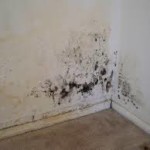 Some time ago, a couple came to see me in the office because they wanted me to prove that they had both developed infection and general ill health from mold. They felt they were exposed to mold in their apartment which they said their landlord refused to have professionally cleaned. They wanted the evidence of infection so that they could bring a lawsuit against him.
Some time ago, a couple came to see me in the office because they wanted me to prove that they had both developed infection and general ill health from mold. They felt they were exposed to mold in their apartment which they said their landlord refused to have professionally cleaned. They wanted the evidence of infection so that they could bring a lawsuit against him.
Another time, I was seeing a patient for something unrelated to mold. He mentioned that he was remodeling his house and in one of the rooms found a heavy amount of “black mold” along an upper wall. Both him and his wife were very concerned that they were living in the house with mold, and wondered if they could be harboring actual infection from the mold.
What is mold? Mold refers to a fungus which exist in 2 forms, a filamentous or spore form, and a yeast form. The filamentous or spore form is how it survives in the environment; the yeast form is how it survives in the body if it causes infection. Molds are found all over the environment – in the soil, amongst plants, especially moist, rotting leaves, on moist wooden surfaces, on food. In the home, mold tends to be in moist areas such as in the bathroom and in the basement. If the humidity in the house is high, mold may grow on clothing in closets, among other things.
The fact that mold is all over our environments means that we are all exposed to it on a daily basis. So my answer to the patient remodeling his house was, if mold posed a significant threat, all of us would be walking around with mold infections. Why isn’t that the case? Our immune systems are saving us once again!
Exposure to mold is by the inhalation route. Once inhaled, the spores get lodged into the small airways of the lungs but the immune system quickly gets to work to kill the spores so that they are not able to “set up shop” and progress into an infection.
Instead of infection, what may happen with persisting exposure to mold, is an allergic reaction. This reaction may be to the mold itself of to toxins produced by the mold. Features of such an allergic reaction include itchy eyes, sneezing, runny nose, sinus congestion, coughing and wheezing. Asthmatics may get more frequent asthma attacks when exposed to mold.
Other allergic conditions that may occur with mold exposure include hypersensitivity pneumonitis (inflammation of the lung tissue because of a severe allergic reaction to inhaled mold), and inhalation fever, which is where someone can become suddenly ill after heavy mold exposure, such as after doing a demolition. They develop shortness of breath, wheezing and fever. Chest X-ray may be abnormal but when samples of sputum are cultured, fungus does not grow, so there is no proof/evidence of an infection.
There is no specific test to determine who will have an allergic reaction to mold and who will not. Regarding mold infection, we do know that persons with weaker immune systems (example after cancer chemotherapy or from AIDS) are more prone to developing infection. Aspergillus and Fusarium are among the more common culprit molds. We have no evidence however, that the mold infection which occurs in cancer patients is as a result of exposure to the mold inside the house.
To avoid adverse health effects from mold, persisting dampness in the house should be minimized. Indicators of dampness include the presence of condensation on surfaces or in structures, visible mold, and history if water damage or leakage. Professional inspection can be done to confirm indoor moisture and the presence of mold.
None of the patients mentioned at the start had symptoms of signs of infection with, or even allergic reaction from mold. In the absence of such, specific testing of the patient is not indicated.
Regarding specific testing for exposure to mold in the household or other environment, unfortunately, there is no evidence to support doing this.
Leave a Reply